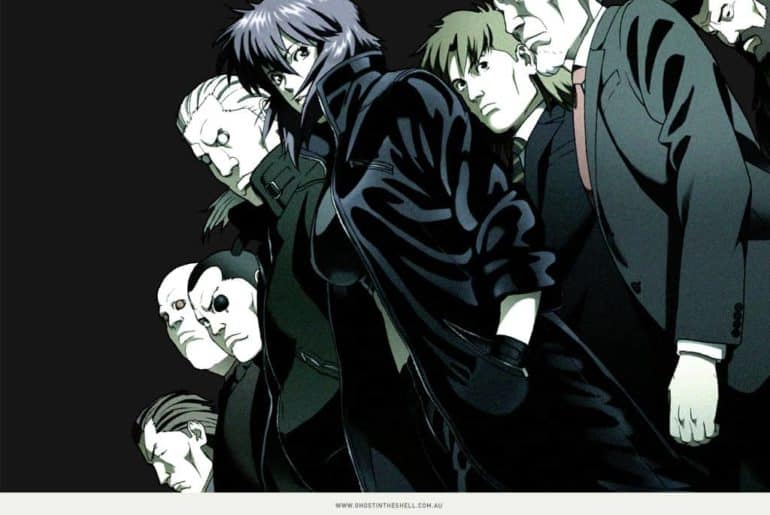WRITTEN BY: Kenji Kamiyama
DIRECTED BY: Kenji Kamiyama
PRODUCTION: Production I.G
YEAR OF RELEASE: 2002
GENRE: Cyber-punk, Action
The year is 2030. It is the decade of the greatest cybernetic advancement in the history of mankind, where the mind is no longer bound to the vessel of the flesh. Imagine the possibilities if your brain could be cyberized and your thoughts digitized into the vast global network. After all, what is a human thought but a simple form of electrical energy? Imagine a world with no physical illness as your consciousness can be transferred to a fully prosthetic body, sculptured in the likes of the Gods themselves.
Kenji Kamiyama’s Ghost in the Shell: Stand Alone Complex is set in this very future where technological leaps have given rise to a whole new breed of crime. And as a response the government of Japan forms a special branch of unconventional covert operatives known as Section 9 that specializes in solving cyber crimes.
The main protagonist is a woman operative in Section 9 named Motoko Kusunagi, often referred to by her rank ‘Major’. Although her mysterious past is kept in the shadows one can notice the ease with which she can handle herself and her team when put in a tough spot. Her cool under fire and her genius hacking makes her a well respected leader and an indispensible asset to the agency. Her team members (and the other protagonist) include Bato, a former ranger who is the only one who can fight in equal footing with the Major, Togusa, a former police officer, family man and the only fully human member of the team, Saito, an eagle eyed sniper, Pazu, a former yakuza turned investigator, Borma and Ishikawa, information gatherers and lastly the head of the entire Section 9 – Daisuke Aramaki, an old man with limitless resources and equally abundant wits who is the main brain behind the entire team. His influence and political manoeuvring has often gotten the team out of sticky situations. The characters are richly varied but yet a cohesive unit. Their camaraderie displayed by their trust for each other and a few jokes to relieve tensions of a gun fight.
The plot follows the usual exploits of Section 9 as they go about their day to day business as any other secret agency – secretly. But the daily redundancies are suddenly broken by the re-appearance of the infamous hacker dubbed ‘The Laughing man’, due to the stylized logo he uses. He is a super wizard level hacker who had created a nationwide sensation when he accused the Japanese government of withholding vital information for their own profit at the cost of human lives. But after his first appearance (which occurred several years before the start of the story) the Laughing Man had vanished and many other criminals, inspired by his persona- committed crime. Section 9 is put into a wild game of cat and mouse as they try to segregate facts from reality, even harder still when all forms of information can now be altered and deleted, even the human memory.
The story requires a bit of patience from the audience as they are directly dropped into the middle of a vast new world. The technological advancement in the series is awe inspiring yet believable and better still is the new society that creates itself around it. As the thin line between man and machine begins to disappear the characters begin to engage in brief yet thought provoking dialogue on modern philosophy such as the definition of a human being. The story telling is bold; it does not shy away from presenting the world as it is – corrupted and diseased. Human passion begins to go beyond flesh and the series gives us the repulsive view of the most humane spectacles – sins. Kenji Kamiyama’s Japan is not just a world of towering sky scrapers and well to do bourgeois, but also diseased slums and shanty towns. The GITS series give us glimpses of both sides of the coin.
The artwork and its curious mix of CGI are amazing. And the music scores by Yokko Kanno fits perfectly with the moments on scene: a sombre music accompanying a crime scene investigation, a pulse setting beat during an intense gun fight or a striking revelation emphasized by eerie background music. Many critics have praised the work of Yokko Kanno and rightfully so.
The series is recommended for a mature audience as it involves a little more than just profanity. But it is a necessity as the story explores the deepest pits of human shallowness. A few unrequired instances may put some of the audience a little off but in a Japanese anime who could expect anything else? Its uncensored gore, fascinating plot and incredible storytelling makes it a must watch. Even to those who believe that cartoons are meant for kids alone. I assure you, Ghost in the Shell: Stand Alone Complex will make you reconsider your presupposition and make you want to watch entire seasons again and again.

